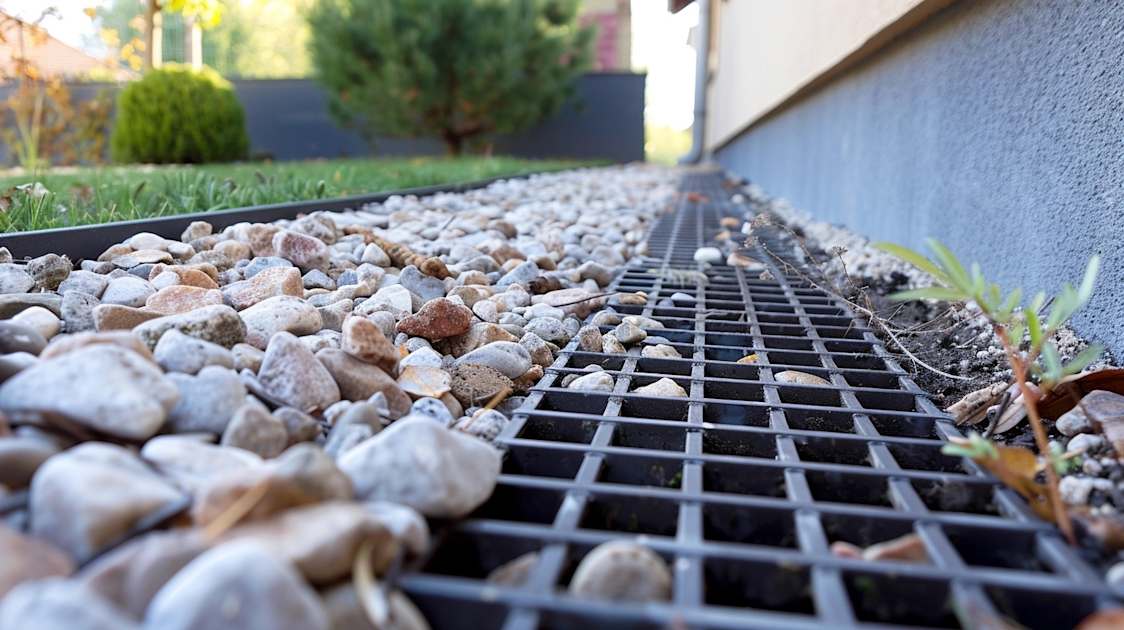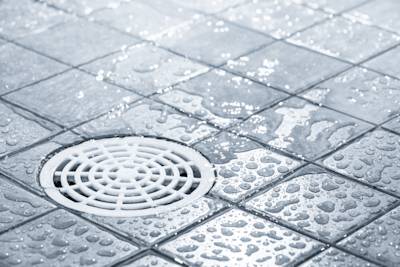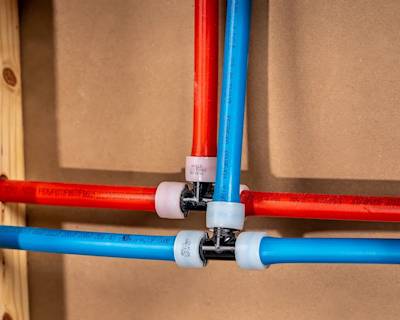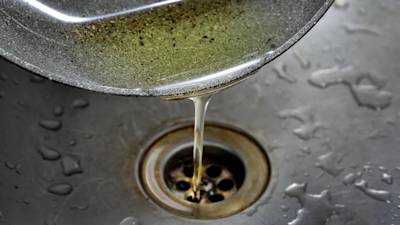Introducing the world of outdoor drainage solutions, one inevitably comes across a popular method known as a French drain system. An essential component in landscape architecture, a French drain system plays a crucial role in managing the excess groundwater in your yard, helping you eliminate soggy lawns and water seepage into your basement. But what is a French drain system? How does it work? Is it suitable for your property? We will delve into its complexities, and in the process, make you well-equipped with the knowledge of this applaudable drainage solution.
Understanding a French Drain System
A French drain system, often simplified as a French drain, is a trench filled with gravel or rock containing a perforated pipe that redirects surface water and groundwater away from an area. The purpose of this system is to prevent groundwater saturation and control water flow in your landscape. It ensures that water from heavy rains and melting snow doesn't accumulate in your yard or enter your home.
Exploring the History of the French Drain
Though the name suggests a connection to France, the French drain was actually invented by an American man named Henry Flagg French in the 19th century. Henry, a lawyer and farmer from Concord, Massachusetts, documented this technique of subsurface drainage in his book “Farm Drainage“ which popularized the method and named it “French drain.”
Components of a French Drain System
The Trench
In a French drain system, the trench serves as the backbone, an essential feature which needs to be constructed correctly. The depth and width of the trench can vary upon the water flow and soil type but are usually about 18 to 24 inches deep and 6 to 12 inches wide.
Gravel or Rock
The gravel or rock facilitates good drain efficiency. Serving as filter material, it lets water trickle down while preventing soil and debris from clogging the system.
The Perforated Pipe
The perforated pipe, often made of PVC piping, collects the water that has seeped down through the gravel or rock and redirects it away from the area.
Landscape Fabric
To prevent the intrusion of small soil particles that could clog the system over time, landscape fabric is often wrapped around the gravel or rock and the perforated pipe.
Bullet points: The Process of Installing a French Drain
-
Determine the Area: Identify the area where water pools and where the water should be diverted to.
-
Dig the trench: The trench should slope from the higher end to the lower end, about one inch every eight feet.
-
Line with landscape fabric: Lay a layer of landscape fabric inside, enough to wrap around the gravel and pipe.
-
Fill with Gravel: Add an initial layer of gravel to the bottom of the trench.
-
Install the Pipe: Place the perforated pipe atop the gravel, drilling side down.
-
Fill and Wrap: Cover the pipe with more gravel, then wrap the excess landscape fabric over it.
-
Complete with soil: Replace the top layer of soil or grass.
The French Drain's Role in Landscape Management
The French drain system can transform landscapes afflicted with persistent groundwater issues. In yards with inadequate surface water drainage, French drains can transport excess water from soggy areas of the lawn to drainage ditches, street drains, or other suitable exit points. Moreover, they can help to defend structures like patios, retaining walls from water damage. While the installation of a French drain can be laborious, the benefits it offers can outweigh every ounce of effort and solidify it as a worthy investment for your property's health and longevity.
Frequently Asked Questions About French Drain Systems
Who invented the French Drain System?
The French drain system wasn’t actually invented in France. It's named after Henry Flagg French from the United States, who popularized this type of drainage system in the 19th century.
How does a French Drain System work?
A French drain system works by redirecting surface water and groundwater away from an area. It consists of a slightly sloped trench filled with gravel and a pipe that diverts water away from your home or another structure.
What are the main components of a French Drain System?
The primary components of a French drain system include a trench, coat of clean gravel, perforated drain pipe, and landscape fabric to prevent soil and silt from clogging the system.
Where can the French Drain System be installed?
The French drain system can be installed anywhere where there's a need to alleviate water accumulation. It is commonly used in landscapes, around the base of a home, or in fields with high moisture content.
When should one opt for a French Drain System?
If you experience frequent flooding, wet basements, or water pooling on your properties, a French drain system can be an effective solution.
Can a French Drain System be a DIY project?
A basic French drain system can be a DIY project for those who have the right tools and a basic understanding of construction and plumbing. However, for larger or more complicated installations, it is advised to hire a professional.
How to maintain a French Drain System?
To ensure the efficient function of a French Drain System, it is essential to regularly clear any visible debris from the surface, flush the system with water, and inspect the outlet for clogs.
What kind of pipe is used in a French Drain System?
Perforated pipes, typically made of PVC, are used in a French Drain System. These pipes have holes or slots that allow water to enter the pipe and be directed away from the property.
What is the cost of installing a French Drain System?
The cost to install a French drain system can vary greatly depending on the size of your property, the length of the trench, and whether you hire a professional or do it yourself. It's always a good idea to get several estimates before making a decision.
Can a French Drain System cause damage to your property?
When properly installed, a French drain system should not cause damage to your property. Actually, it should prevent water damage by effectively diverting water away. However, if incorrectly installed, it could lead to uneven water diversion and could potentially cause damage.
Can a French Drain System deal with heavy rainfall?
Yes, a properly designed and installed French Drain System can handle heavy rainfalls. It works by providing an easy channel for the water to flow, preventing accumulation and potential flooding.
What is the difference between an interior and exterior French Drain System?
An exterior French drain system is installed around the perimeter of a home or structure to divert water away, while an interior French drain is installed inside, commonly in basements, and captures water that seeps inside, redirecting it out.
How long does a French Drain System last?
A well-installed and properly maintained French drain system can last anywhere from 20 to 30 years. However, its lifespan can significantly reduce if not regularly cleaned and maintained.
Pros of a French Drain System
Water Drainage
-
A primary advantage of the French drain design is its ability to efficiently drain water from your property. Even during heavy rainfall, a well-constructed French drain system ensures that water channels away from your home and into a safer area such as a city storm drain or a low-lying section of your yard.
-
This system is specifically designed to prevent water pooling and consequent soil saturation around the foundation of your house. In essence, French drains help reduce the risk of water damage.
Ease of installation
-
French drains are relatively easy to install. They can be constructed using readily available materials such as gravel (or rock), pipe, and landscape fabric.
-
With a little knowledge in construction and the right tools, homeowners can opt to install the French drain system themselves, potentially saving on installation costs.
Cosmetic Appeal
-
When installed properly, a French drain can add an element of aesthetic appeal to your landscape design. They can be made to blend with your garden or yard.
-
You can cover the French drain system with attractive rocks or plant it with grass to create a natural camouflage. As such, it can enhance the visual appeal of your landscape without disrupting its natural feel.
Versatility
-
French drains are versatile and can be applied in various areas, both in residential and commercial properties. They are commonly used around home foundations, across driveways, and in lawns or gardens that have drainage issues.
-
The system can also be installed inside the basement to manage underground moisture, protecting your home's structure and your belongings.
Increased Property Value
-
Having a functional French drain system installed in a property can boost its market value. Good drainage systems make homes more appealing to potential buyers since they do not have to worry about water damage.
Cons of a French Drain System
Installation Challenges
-
Though the French drain system can be described as relatively easy to install, the process can be challenging and time-consuming. It involves extensive digging and precise placement of pipe — tasks that may prove physically demanding for DIY enthusiasts.
-
Land grading, determining the point of discharge, and complying with local building and safety regulations can introduce complexities in the installation process.
Maintenance
-
French drain systems require regular maintenance to keep them functional. Over time, the system can have a buildup of leaves, dirt, or other debris that can block the flow of water.
-
While landscape fabric is commonly used to prevent this, it does not always guarantee a maintenance-free operation. Regular cleaning is necessary to prevent clogging and keep the water flowing freely.
Can Disturb Landscaping
-
Installation of a French drain may disturb existing landscaping. Trench digging can disrupt your carefully arranged yard or garden, and may require you to undertake significant restoration work after the installation.
Not Suitable for All Types of Soil
-
Certain soil types, particularly clay soils, do not drain water efficiently making French drain less effective. It is important to consider your area's soil type before deciding to install this system.
Potential for Misuse
-
If not designed and installed correctly, a French drain system may facilitate the improper drainage of surface-water runoff. This can cause erosion or even water damage to neighboring properties leading to disputes.
Summary
Unquestionably, a French drain system is an effective solution for managing surface and groundwater. This simple yet innovative system silently works in the background, directing excess water away from your property, safeguarding it from the damaging effects of waterlogging. Whether it's a rainy season or melting snow, the French drain system has got your back!
Moreover, the French drain system demonstrates how simplicity and functionality can go hand in hand. Who would have thought that a trench filled with gravel or rock could effortlessly direct water away from areas where it’s unwelcome? In fact, you may not even realize the existence of this system until you switch properties and experience the damaging effects of errant water!
It’s important to remember, however, that the effectiveness of a French drain system also relies on proper installation and regular maintenance. Remember, water always chooses the path of least resistance, and if your French drain system is not properly installed and maintained, water might find an easier path - like your basement! Therefore, it's crucial to hire a professional to install it or to learn how to carefully maintain it if you install it yourself.
About KYPD Plumbing
Welcome to KYPD Plumbing, your reliable local plumbing company based right here in Nicholasville, KY! We pride ourselves on providing high-quality and affordable plumbing services with an unbeatable customer service experience. Whether it's a simple leak repair, drain cleaning or a full-fledged remodeling project, our team of experienced professionals have got you covered. We bring you dependable solutions with integrity and knowledge. To learn more about us, please visit our website here. Your satisfaction is our top priority and we look forward to serving you!
Tags: French Drain System, Water Management, Drainage Solutions,



































